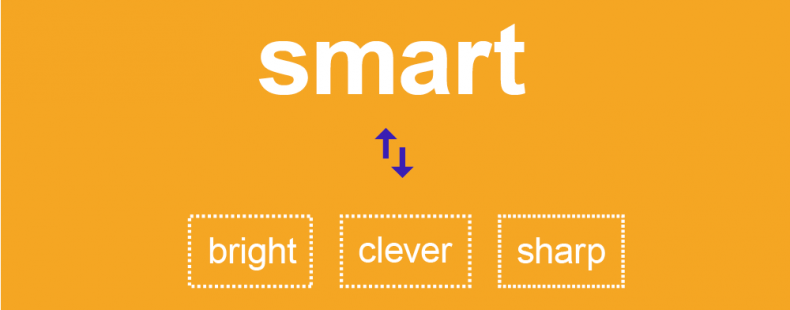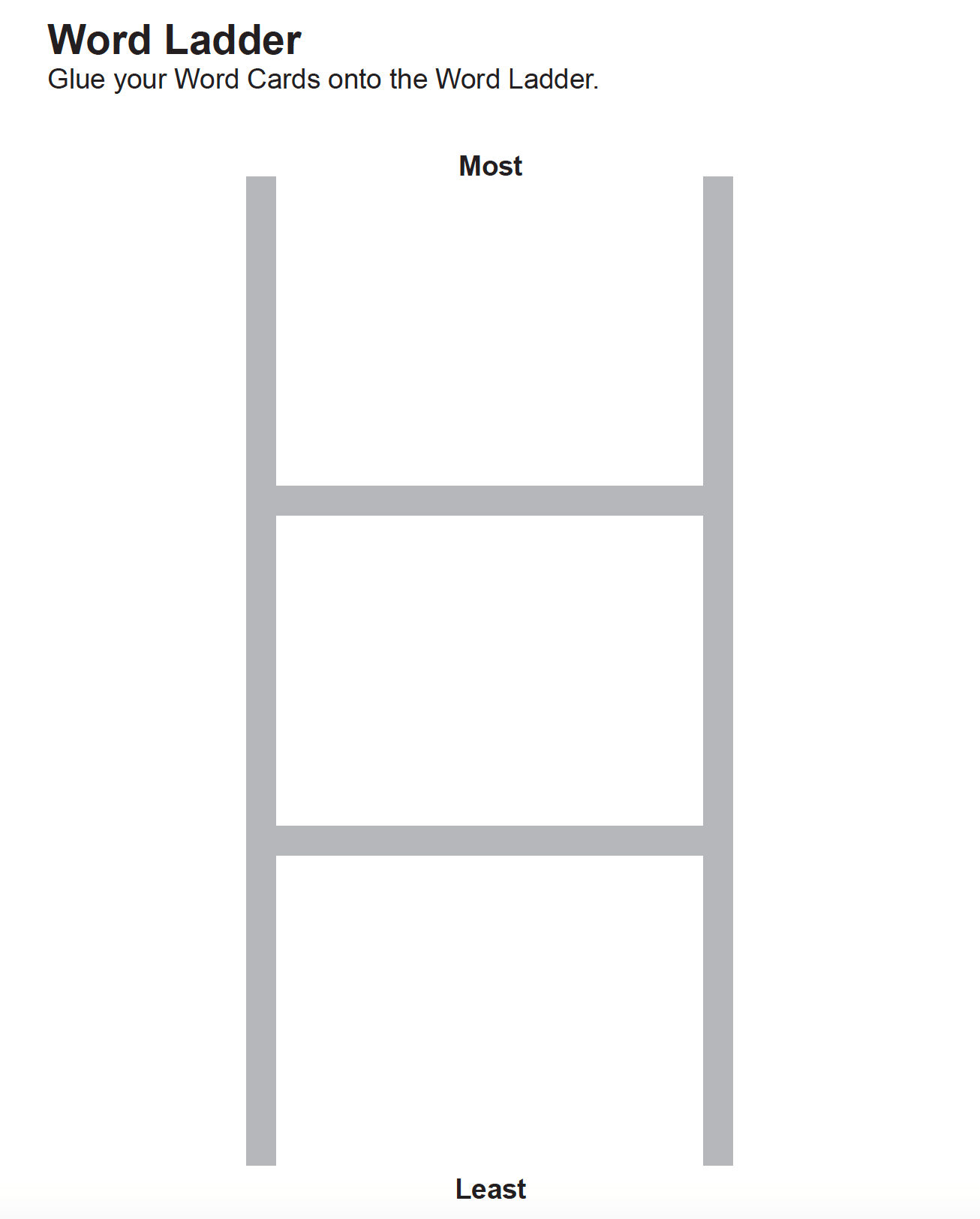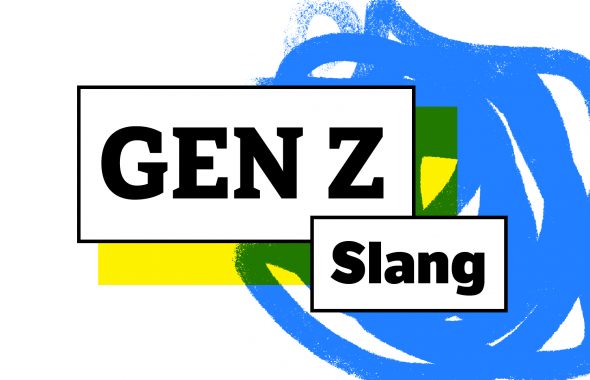by Kimberly Murphy
When you were in school, you were likely taught that synonyms are words with the same meaning. That definition, though, isn’t entirely accurate. Synonyms are words with the same or similar meanings, but there are important, nuanced differences in how they are used. Educators refer to these differences as shades of meaning.
Let’s break down this concept some more—with some printable, hands-on activities for your kids or students.
Synonyms vs. shades of meaning
Let’s explore shades of meaning for the synonyms of smart. If you look it up on Thesaurus.com, you will find about 40 words that mean roughly the same thing: brainy, bright, clever, crafty, sharp, wise, and genius, just to name a few!
In general, we call these words synonyms, but let’s think about how we actually use these words, though:
- Yes, brainy means “smart,” but it also implies a sort of nerdiness or enjoyment of intellectual study.
- If you described someone as crafty, you would be saying that they are smart in a cunning or devious way. That isn’t much of a compliment!
- Someone who is wise is not only smart, but has good judgment as well.
Shades of meaning are especially relevant when discussing words related to degrees or extremes. You might enjoy going for a hike on a warm day, but not a hot day—and certainly not a sweltering day! One way children make sense of shades of meaning is by putting synonym word sets in order from least intense to most intense, and vice versa.
Practice shades of meaning with these activities
Practicing shades of meaning helps children become more descriptive and specific in their communication skills. Equipped with a word list, original printables, and some items easily found around the house, you and your child can explore the wide world of synonyms!
Word ladder
Help your child nail down the precise meanings of similar words using the printables below! Follow these steps:
- Look up the definition for each word on the Word Cards. (Word Cards printable is linked.)
- Write brief definitions on the cards.
- Cut out the Word Cards and group by synonyms.
- Print out two Word Ladders. (Printable is linked.)
- Glue one synonym set onto each ladder in order from the least (at the bottom) to most (at the top). Least applies to the word whose meaning is the least intense for the particular quality or action at hand; most applies to the word whose meaning is the most intense.
- Have your child use each word on the ladder in a sentence.
- Use blank printables to make your own Word Ladders!
Cluster map
Give your child or student a piece of paper and a variety of markers, crayons, or colored pencils. Have them choose one adjective and write it in the middle of the page. Then work with your child to brainstorm related words, including synonyms and examples. (For instance, beautiful might bring to mind pretty, lovely, flower, view, and so on.) Prompt your child to explain their train of thought as they connect words with colored lines and arrows. Challenge them to keep going until the page is full!
Word cloud
Choose a verb or adjective and have each family member list as many synonyms as they can. Help your child enter the words into an online word cloud generator to make a unique visualization of related words. If you do not have access to this kind of app, use different colors and fonts to draw your own word cloud.
Paint shades of meaning
Do you have any paint chips (color swatches) lying around your home? The shades of light to dark on a paint chip can show shades of meaning, too! Have your child choose a series of related words and write them on the paint chip, with the intensity of each word matching the intensity of the color. If you don’t have a paint chip, have your child use crayons or colored pencils to produce the same effect on a sheet of paper!
Build a quiz
Have your child design a shades of meaning quiz for other family members. Allow them to select the words and synonyms, then write a sentence with a blank. Family members have to choose which word fits best in the sentence. Be warned—kids can be tough graders!
Everyone’s a critic!
Movies and books often get ratings out of five stars. Why not words? Using a list of words related by degrees of intensity, work with your child do develop a ratings system. Then write a review of the word and give it a rating. For example, the word blizzard might receive a “five-snowflake” rating for being the most extreme kind of snowstorm, whereas flurries might get a rating of two snowflakes for being relatively mild.
Synonym charades
Put your acting skills to the test in this activity:
- Have family members write synonyms on note cards.
- Take turns choosing a note card at random and acting it out.
- Guess which word each player is performing. For example, someone with a frown might be acting out the word upset, but someone who is wailing and sobbing might be acting out the word distressed.
- Encourage children to describe how the performance of related words revealed slightly different meanings.
Which of these activities does your child or student think was the most fun, enjoyable, delightful, amusing, or entertaining?















